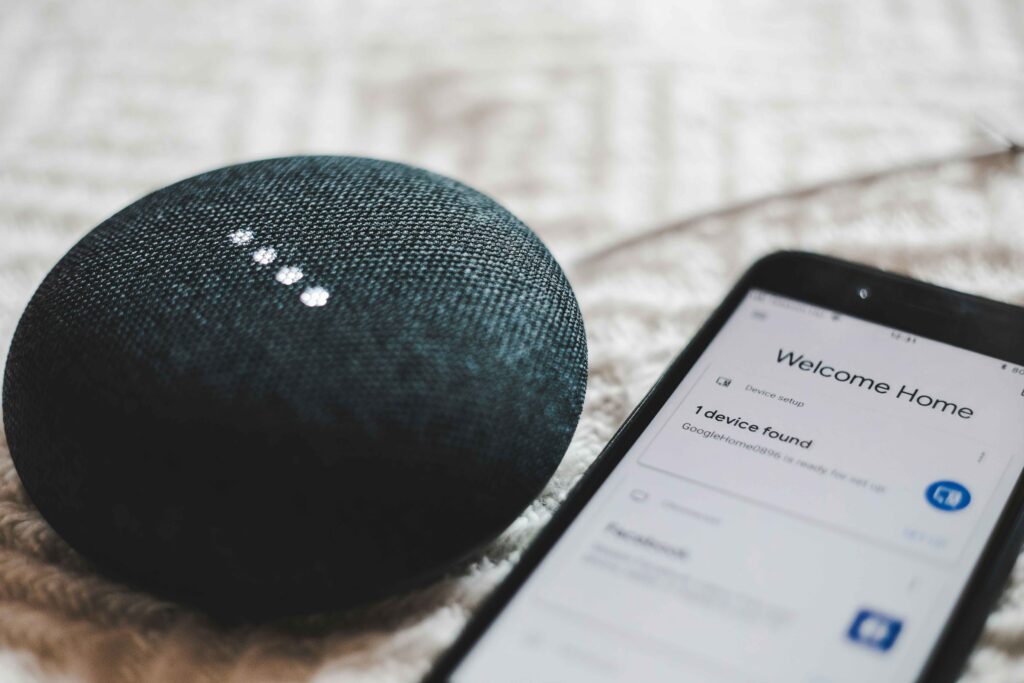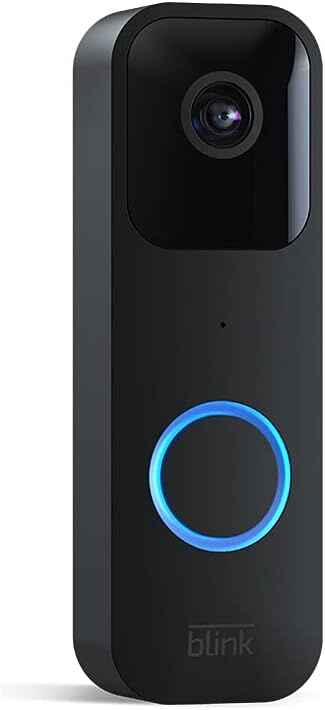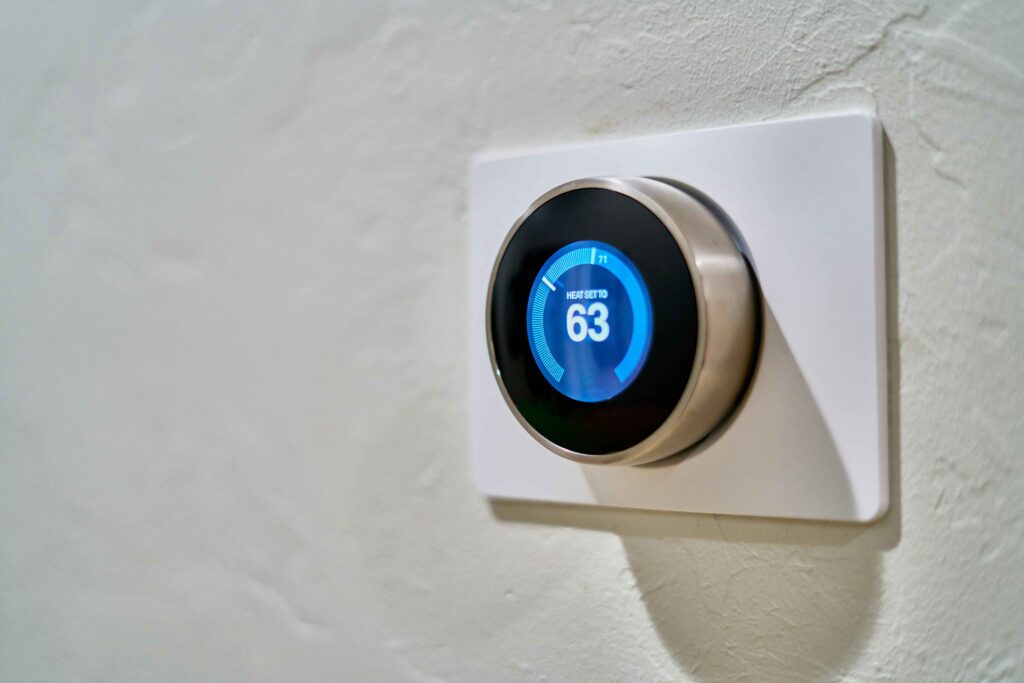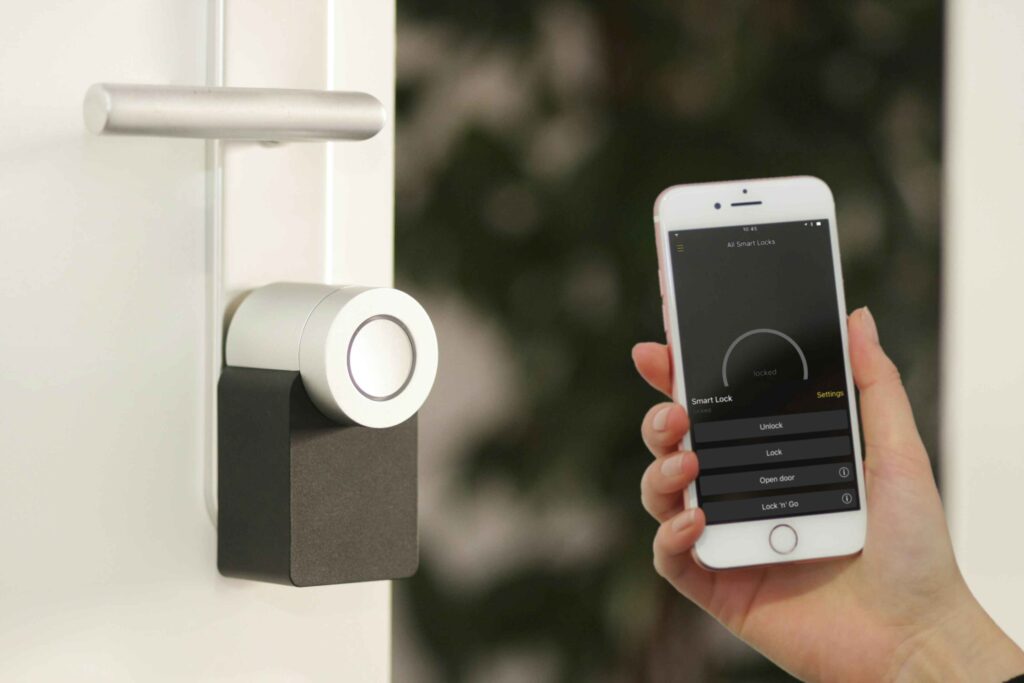Problem:
Have you ever dreamed of transforming your house into a cutting-edge smart home, but felt overwhelmed by where to start? This Guide to build a smart home from scratch is just for you. With the vast array of devices available, it’s easy to get lost in the complexity of building a smart home from scratch. However, with the growing popularity of smart home technology, the benefits of convenience, security, and energy efficiency are becoming increasingly apparent.
Agitation:
Navigating through the myriad of options can be daunting, leaving you unsure which devices are essential for your needs and how to integrate them seamlessly into your daily life. The fear of investing in the wrong products or struggling with complicated setups might be holding you back from embracing the convenience and efficiency of smart home technology.
Solution to Smart Homes:
But fear not! In “The Ultimate Guide to Smart Home Devices: Making Your Home Smarter, Safer, and More Efficient,” we’re here to simplify the process for you. Whether you’re a tech enthusiast eager to dive into the world of home automation or a beginner looking for guidance, this comprehensive guide will provide you with everything you need to know to build a smart home from scratch. From essential devices to step-by-step setup instructions, we’ll empower you to create a smart home that’s tailored to your lifestyle and preferences.
In this article, we’ll explore the essential components of a smart home, discuss must-have devices, offer tips for budget-friendly setups, and address common concerns such as security and compatibility. By the end, you’ll feel confident and excited to embark on your smart home journey, ready to unlock the full potential of modern technology in your living space. So let’s dive in and turn your dream of a smart home into a reality!
Are you curious about what devices make up a smart home? From enhancing convenience to improving security and energy efficiency, smart home devices come in various categories to cater to your needs. Let’s explore some of the essential types of smart home devices that can transform your living space into a tech-savvy haven.
What Types of Devices are in a Smart Home?

Home Automation Devices:
Home automation devices offer unparalleled convenience and efficiency by allowing you to control your home’s electronic devices remotely. Some popular examples include:
- Smart plugs: Easily turn any device into a smart device by plugging it into a smart plug. Control lamps, fans, and more from your smartphone.
- Smart switches: Replace traditional light switches with smart switches to control your lights remotely and set schedules for automated lighting.
Security Devices:
Keep an eye on your home, even when you’re away, with smart security devices. Smart cameras offer real-time monitoring and alerts, while smart doorbells provide video footage of your doorstep, enhancing the security of your property. These devices offer peace of mind and help deter potential intruders.

Enhance the security of your home with smart security devices that provide peace of mind and real-time monitoring. Here are a few popular options:
- Smart cameras: Keep an eye on your home with indoor and outdoor smart cameras that offer high-definition video surveillance and motion detection.
- Smart doorbells: Answer your door from anywhere with a smart doorbell that allows you to see and speak to visitors through your smartphone.
Entertainment Devices:
Upgrade your entertainment experience with smart TVs and smart speakers. With built-in voice assistants and streaming capabilities, smart TVs allow you to access your favorite shows and movies with ease. Smart speakers, on the other hand, provide immersive audio experiences and can control other smart devices in your home with voice commands.
Transform your home entertainment experience with smart TVs and speakers that offer advanced features and seamless integration. Consider these popular choices:
- Smart TVs: Access your favorite streaming services and control your TV with voice commands using a smart TV equipped with built-in streaming apps and voice assistants.
- Smart speakers: Enjoy immersive audio and hands-free control of your smart home devices with smart speakers that feature voice assistants like Amazon Alexa or Google Assistant.
Environmental Control Devices:
Maintain a comfortable and energy-efficient home environment with smart thermostats and smart lighting. Smart thermostats learn your preferences and adjust the temperature accordingly, helping you save on energy costs. Meanwhile, smart lighting systems allow you to customize the ambiance of your home and control lights remotely, adding convenience and style to your space.

Create a comfortable and energy-efficient home environment with smart thermostats and lighting systems. Here are some top picks:
- Smart thermostats: Save energy and money by remotely controlling your home’s heating and cooling systems and setting personalized schedules with a smart thermostat.
- Smart lighting: Set the perfect ambiance in any room with smart lighting solutions that allow you to adjust brightness, color, and scheduling from your smartphone.
How to Turn Your Home into a Smart Home from Scratch:
Are you ready to embark on the journey of turning your traditional home into a smart haven? Here are some practical tips to guide you through the process:
Start with a Central Hub or Voice Assistant:
A central hub or voice assistant serves as the brain of your smart home, allowing you to control and manage all your connected devices from one central location. Popular options include Amazon Alexa, Google Assistant, and Apple HomeKit. Choose a hub or assistant that aligns with your preferences and existing devices, and set it up as the focal point of your smart home ecosystem.
Smart Doorbell Cameras:
A smart doorbell camera is an invaluable addition to any smart home, offering both security and convenience. These innovative devices allow you to see and speak to visitors at your door from anywhere, using your smartphone or tablet.
With features like motion detection, night vision, and two-way audio, smart doorbell cameras provide enhanced home security by alerting you to any activity at your doorstep, whether it’s a package delivery or unexpected visitors.
Additionally, some models offer advanced features such as facial recognition and cloud storage for recorded footage, giving you peace of mind knowing that your home is protected around the clock. Integrating a smart doorbell camera into your smart home ecosystem adds an extra layer of security and convenience, allowing you to keep an eye on your home no matter where you are.
Gradually Add Compatible Smart Devices:
Once you’ve set up your central hub or chosen your voice assistant, it’s time to begin building your smart home from scratch by adding compatible smart devices.
Start by prioritizing devices that cater to your immediate needs or offer the most immediate benefits. For instance, if you’re keen on effortlessly controlling your home’s lighting or appliances wirelessly, focus on devices that enable such manipulation, like smart switches or plugs.
Similarly, if energy efficiency and comfort are your main concerns, consider installing a smart thermostat to regulate your home’s temperature or invest in a smart lighting system to optimize energy usage. By selecting devices that align with your specific goals, you can efficiently lay the foundation for a smart home tailored to your preferences and needs.
As you gradually add smart devices to your home, be mindful of compatibility to ensure seamless integration with your central hub or voice assistant. Many smart home ecosystems support a wide range of devices from various manufacturers, but it’s always a good idea to double-check compatibility before making a purchase.
Prioritize based on Needs and Budget:
Building a smart home doesn’t have to happen overnight. Prioritize your purchases based on your needs, preferences, and budget constraints. Start with essential devices that offer the most immediate benefits, and then expand your smart home ecosystem over time as your needs evolve and your budget allows.
Remember, building a smart home is a journey, not a destination. Take it one step at a time, and enjoy the process of transforming your traditional home into a modern, connected oasis of convenience and efficiency.
There is a chance that you are building a new home and you want it to be a smart home from day one. Still, the recommendation is that you try out different devices. Remember, most smart devices will have features that overlap with existing devices. Start with the must-have Smart Home Gadgets, progress slowly as you find the need.
How much does it Cost to build a Smart Home?
Curious about the financial investment required to transition your home into a smart haven? Let’s delve into the costs associated with building a smart home and explore some budget-friendly options to help you get started. Here’s a breakdown of the expenses involved:

Smart Hub or Voice Assistant:
- A central hub or voice assistant serves as the backbone of your smart home, enabling communication between devices. Prices vary depending on the brand and features, with options ranging from affordable to premium. Here are some general cost ranges:
- Basic Voice Assistant (e.g., Amazon Echo Dot): ~$50 – $200 plus
- Smart Hub with Voice Assistant (e.g., Google Nest Hub): ~$100 – $200 plus
- Check latest prices here↗️
Smart Devices:
The cost of smart devices can vary significantly based on factors such as brand, functionality, and quality. Opting for cost-effective Chinese smart devices can be a budget-friendly choice, but it’s essential to research thoroughly and consider any potential security concerns associated with inexpensive options. Here are some examples:
- Smart lights: ~$15 – $50 per bulb
- Smart thermostat: ~$100 – $200
- Smart door lock: ~$50 – $200
Installation and Setup:
While some smart devices are plug-and-play, others may require professional installation, which can add to the overall cost. Consider whether you’ll need assistance with setup and factor in any associated fees. Installation costs can vary depending on the complexity of the device and electrician rates in your area, but generally range from ~$50 to $150 per device.
Subscription Services:
Certain smart home devices may come with optional subscription services that offer additional features or cloud storage for data. Be sure to factor in any recurring subscription costs when budgeting for your smart home setup. These services typically range from ~$5 to $15 per month(or even more in some cases), depending on the features offered.
Security Measures:
Investing in security measures such as encryption protocols and secure networks can help address concerns related to the use of inexpensive smart devices. While this may incur additional costs upfront, it’s crucial for safeguarding your smart home against potential cybersecurity threats. The cost for these security measures can vary depending on the complexity of your setup, but generally ranges from ~$30 to $100 for a good security router and antivirus software.
By carefully considering these factors and exploring cost-effective options, you can create a smart home that aligns with your budget and enhances your lifestyle. Remember to prioritize your needs and research thoroughly to make informed decisions when investing in smart home technology.
In short, a smart home can cost anywhere from as low as $50 for a basic setup to thousands of dollars if you want to add a bunch of extra features. It all depends on what you want!
Adoptation of Smart Homes and WIFI necessity
In today’s digitally driven world, the adoption of smart home technology is on the rise, revolutionizing the way we interact with our living spaces. According to recent statistics, the penetration of smart home devices in households is steadily increasing, with a significant percentage of homes now equipped with at least one smart device. This surge in adoption can be attributed to several factors, including the growing awareness of the benefits of smart home technology and advancements in device affordability and accessibility.
Moreover, trends in consumer behavior indicate a clear preference for smart home devices, with demand steadily growing across various demographics. From millennials seeking convenience and connectivity to baby boomers embracing aging-in-place solutions, there’s a widespread recognition of the value that smart home technology brings to daily life. As a result, manufacturers and developers are continuously innovating and expanding their product offerings to cater to the evolving needs and preferences of consumers.
Necessity of Wi-Fi for Smart Homes:
Central to the operation of smart home devices is Wi-Fi connectivity, which serves as the backbone of communication between devices and enables remote control and monitoring. Wi-Fi connectivity allows smart devices to seamlessly communicate with each other and with your smartphone or central hub, facilitating the automation and customization of your smart home experience.
However, in areas with poor Wi-Fi coverage or unreliable internet connections, maintaining a robust smart home network can be challenging. In such cases, alternative connectivity options may be necessary to ensure the smooth operation of smart devices. These options may include:
- Ethernet Connection: For devices that require a stable internet connection, such as smart hubs or security cameras, using an Ethernet connection can provide a reliable alternative to Wi-Fi.
- Mesh Wi-Fi Systems: Mesh Wi-Fi systems utilize multiple access points placed throughout your home to extend coverage and eliminate dead zones, providing a more robust Wi-Fi network for smart devices.
- Powerline Adapters: Powerline adapters use your home’s electrical wiring to transmit data signals, offering a reliable connection for smart devices in areas where Wi-Fi signals are weak or non-existent.
By understanding the necessity of Wi-Fi connectivity in smart home operation and exploring alternative connectivity options, you can ensure that your smart home remains connected and responsive, regardless of your home’s unique network challenges.
Conclusion to Smart Homes:
In conclusion, the journey to building a smart home from scratch is one filled with countless benefits and opportunities for innovation. From the convenience of controlling your home’s lighting and temperature with a simple voice command to the peace of mind provided by advanced security features, smart home technology offers a myriad of advantages for homeowners. By embracing the principles outlined in this ultimate guide to smart homes, you have the power to transform your living space into a modern oasis of comfort, efficiency, and connectivity.
As you embark on this exciting journey, I encourage you to explore and experiment with different smart home devices to discover what works best for you. Whether you’re a tech enthusiast eager to dive into the world of home automation or a beginner looking for guidance, remember that building a smart home is a customizable process tailored to your unique needs and preferences. With each new device and integration, you’ll unlock new possibilities for enhancing your living experience and optimizing your daily routines.
So, don’t hesitate to dive in and start building your smart home today. With the knowledge and resources provided in this guide, you’re well-equipped to embark on this transformative journey with confidence and enthusiasm. Here’s to a future filled with endless possibilities and the boundless potential of smart home technology.
FAQ: Your Smart Home Queries Answered
What are the must-have smart home devices?
Must-have smart home devices include smart thermostats for energy efficiency, smart security cameras for enhanced home security, smart lighting systems for ambiance control, and smart assistants like Amazon Alexa or Google Assistant for seamless voice control of your devices.
What’s the cheapest way to convert to a smart home?
The most budget-friendly way to convert to a smart home is to start with affordable devices such as smart plugs, which can transform ordinary appliances into smart ones. Additionally, look for bundled starter kits and consider opting for cost-effective Chinese smart devices, but be sure to research their compatibility and security features.
Chinese devices have tendency to spy on various activities, make sure you opt for trusted brands only.
What’s the difference between a smart home and a digital home?
While the terms are sometimes used interchangeably, a smart home typically refers to a residence equipped with internet-connected devices that can be remotely controlled, automated, or monitored. A digital home, on the other hand, encompasses a broader range of digital technologies beyond just smart devices, including home entertainment systems, networking infrastructure, and more.
How can I make an older home smarter?
To make an older home smarter, start by upgrading to smart devices that don’t require extensive installation or renovation, such as smart plugs, smart bulbs, and smart thermostats. Consider retrofitting existing systems with smart technology, like replacing traditional locks with smart locks or installing a smart hub to unify control of various devices.
What’s the impact of a smart home on property value?
While the impact can vary depending on factors such as location and market trends, a smart home can generally increase property value by enhancing convenience, energy efficiency, and security. Features like smart thermostats, security cameras, and integrated smart home systems may appeal to potential buyers and contribute to a higher resale value.
Are there alternatives to smart home technology?
Yes, there are alternatives to smart home technology, such as traditional home automation systems that don’t rely on internet connectivity, DIY solutions like Arduino or Raspberry Pi projects, and manual methods of achieving similar results, albeit with less convenience and automation. Consider your needs and preferences when exploring alternatives to smart home technology.
